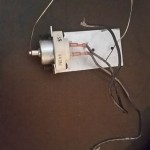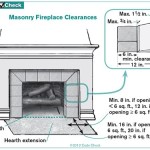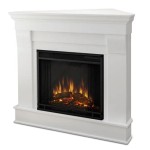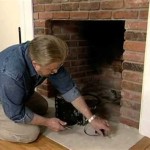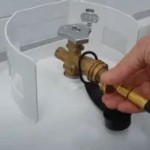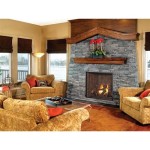How to Babyproof a Marble Fireplace
Marble fireplaces, prized for their elegance and aesthetic appeal, pose specific challenges when it comes to babyproofing. Their hard surfaces, sharp edges, and potential for radiant heat can create a hazardous environment for infants and toddlers exploring their surroundings. A comprehensive strategy addressing impact protection, heat prevention, and stability enhancement is crucial to ensure a safe environment for young children in a home with a marble fireplace.
The primary concern with a marble fireplace is impact. The hard surface of marble can cause serious injury if a child falls and strikes it. Additionally, the sharp edges commonly found on fireplace mantels and hearths present a laceration risk. A multifaceted approach is necessary, involving padding, edge cushioning, and potentially, physical barriers.
Another significant hazard is the potential for burns. Even when the fireplace is not actively in use, the marble can retain heat for a considerable period after a fire has been extinguished. Furthermore, if the fireplace utilizes a gas or electric insert, the surrounding surfaces can become dangerously hot. Prevention strategies must address both residual heat and the direct dangers associated with active fireplace use.
Finally, the stability of the fireplace itself, particularly the mantel and any decorative elements, should be assessed. While generally robust, older fireplaces or those with intricate designs may be more susceptible to instability, especially if a child attempts to climb on them. Secure mounting and reinforcement may be necessary to prevent accidental dislodgement.
Padding and Edging: Minimizing Impact Injuries
The most direct method of mitigating impact injuries is through the application of padding and edge cushioning. A variety of products are available specifically designed for fireplace babyproofing, typically constructed from dense foam or rubber materials. These products can be applied to the hearth, mantel, and any other exposed marble surfaces. Selection should be based on the thickness and density of the padding, as well as the ease of installation and removal.
For the hearth, consider installing a full-coverage hearth guard. These guards are typically rectangular or semicircular and are designed to completely cover the hearth, providing a thick layer of cushioning. They are often secured with adhesive strips, ensuring a secure and stable barrier. When selecting a hearth guard, pay attention to the material's fire resistance. While the goal is impact protection, the guard should not be easily flammable.
Edge cushioning, often sold in rolls or pre-cut strips, can be applied to the sharp edges of the mantel and hearth. These cushions are typically made of soft, flexible foam and adhere to the surface using adhesive. Ensure the adhesive is strong enough to withstand a child's tugging but also removable without damaging the marble surface. Test the adhesive in an inconspicuous area before applying it to the entire fireplace.
When installing padding and edging, meticulous application is crucial. Ensure all surfaces are clean and dry before applying the adhesive. Apply even pressure to the padding to ensure a strong bond. Regularly inspect the padding for wear and tear and replace it as needed. Consider the overall aesthetic of the room when selecting padding color and style. Neutral colors are often the least obtrusive.
Beyond commercially available products, custom padding solutions can be created using materials like neoprene or closed-cell foam. These materials can be cut to specific shapes and sizes and attached using industrial-strength adhesive or Velcro strips. This allows for a more tailored solution, particularly for fireplaces with unusual designs or dimensions. However, custom solutions require more effort and may not offer the same level of impact protection as purpose-built products.
Heat Prevention: Protecting Against Burns
Preventing burns is paramount when babyproofing a marble fireplace. Even after the fire has been extinguished, the marble can retain heat for a considerable period. The implementation of a physical barrier is often the most effective way to prevent accidental contact with hot surfaces. Furthermore, educating older children about the dangers of the fireplace is crucial.
A fireplace screen or guard is essential. These barriers are typically made of metal mesh or tempered glass and are designed to prevent children from getting too close to the fire. Ensure the screen is tall enough to prevent a child from reaching over it and that the mesh openings are small enough to prevent them from sticking their fingers through. The screen should also be securely anchored to the fireplace or wall to prevent it from being easily knocked over.
Consider investing in a heat-resistant fireplace mat. These mats are designed to protect the floor from embers and sparks, but they can also provide a visual cue that the area around the fireplace is potentially hot. Select a mat that is made of a non-slip material to prevent accidental slips and falls. The mat should extend far enough from the fireplace to catch any stray embers or sparks.
When the fireplace is not in use, keep the damper closed to prevent drafts and heat loss. However, be sure to open the damper before lighting a fire to prevent smoke buildup. Never leave a fire unattended, and ensure that all embers are completely extinguished before leaving the house or going to bed. Educate all members of the household about fireplace safety procedures.
If the fireplace uses a gas or electric insert, consider installing a heat shield. These shields are designed to deflect heat away from the surrounding surfaces, preventing them from becoming dangerously hot. The heat shield should be installed according to the manufacturer's instructions and should be regularly inspected for damage. A thermostat that automatically shuts off the gas or electric insert when a certain temperature is reached can also add layers of safety.
Even with physical barriers in place, it's important to monitor the temperature of the marble surface after a fire. Use a non-contact thermometer to check the temperature and keep children away from the area until it has cooled down sufficiently. Consider placing warning signs near the fireplace to remind everyone of the potential burn hazard.
Stability and Reinforcement: Preventing Accidents Due to Instability
The stability of the marble fireplace, particularly the mantel and any decorative elements, is a critical aspect of babyproofing. A loose or unstable component can pose a significant risk if a child attempts to climb on the fireplace or pulls on it. A thorough inspection and reinforcement of any weak points are essential to prevent accidents.
Begin by carefully inspecting the fireplace for any signs of instability. Check the mantel for looseness or cracks. Examine the mortar joints between the marble slabs for deterioration. Look for any signs of movement or shifting. If any issues are detected, consult with a qualified contractor or mason to assess the extent of the damage and recommend appropriate repairs.
If the mantel is loose, it may need to be re-secured to the wall using appropriate fasteners. Ensure the fasteners are long enough to penetrate deeply into the wall studs or masonry and that they are strong enough to support the weight of the mantel. Consider using construction adhesive in addition to fasteners to provide extra stability. When working with marble, choose fasteners and adhesives that are compatible with the material to prevent staining or damage.
Reinforce any decorative elements that are attached to the fireplace, such as carvings or sculptures. These elements may be particularly vulnerable to being pulled off by a child. Secure them with strong adhesive and, if possible, with mechanical fasteners. Consider removing any decorative elements that are not essential or that pose a particular safety risk. Store these elements in a safe place until the child is older.
Prevent access to the fireplace by using furniture strategically. Position furniture in front of the fireplace to create a physical barrier, making it more difficult for a child to reach the area. This can be particularly effective when combined with other babyproofing measures, such as padding and edge cushioning. However, ensure that the furniture itself is stable and cannot be easily tipped over.
Consider installing a gate or fence around the fireplace. This is a more drastic measure, but it may be necessary if other babyproofing methods are not sufficient. Choose a gate or fence that is tall enough to prevent a child from climbing over it and that is securely anchored to the floor or wall. Ensure the gate or fence does not pose a tripping hazard.

How To Baby Proof A Fireplace Diy Hearth Cushion Simply September

How To Baby Proof A Fireplace Diy Hearth Cushion Simply September

How To Baby Proof A Fireplace Diy Hearth Cushion Simply September

How To Baby Proof A Fireplace Diy Hearth Cushion Simply September

Fireplace Screen Mesh Cover Baby Proof Barrier Guard Pet Com

How To Baby Proof A Fireplace Diy Hearth Cushion Simply September

3 Ways To Baby Proof A Fireplace Wikihow

Diy Fireplace Hearth Idea For Child Proofing

How To Baby Proof A Fireplace Diy Hearth Cushion Simply September

How To Baby Proof A Fireplace Diy Hearth Cushion Simply September Proofing Stuff
Related Posts


